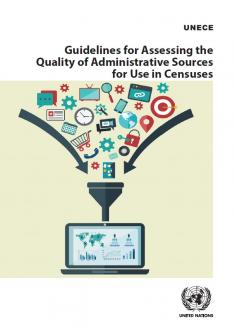The use of administrative data for censuses continues to increase across the countries of the UNECE region and beyond. Administrative sources are used in a wide variety of ways, from supporting operations in a traditional census all the way to fully register-based censuses. It is important that NSOs understand the strengths and limitations of administrative data for use in their censuses, to ensure that they make fully-informed decisions about the use of such data.
Drawing on quality frameworks and best practices adopted by NSOs across the world, these Guidelines lead census practitioners through the practical stages of assessment; from working with an administrative data supplier to understand the strengths and limitations of a source, all the way to the receipt and analysis of the actual data. The Guidelines cover key quality dimensions on which an assessment is made, using a variety of tools and indicators. The Guidelines are based on four Stages: Source, Data, Process, and Output, with the first two Stages being the principal focus of the Guidelines.
The Guidelines are the result of work undertaken by a Task Force of experts from 20 countries and organizations, reflecting the wide diversity of census methodologies and uses of administrative data in the UNECE region. The experiences of many of these countries are included throughout the Guidelines as illustrative examples and case studies, showing how the tools presented can be put into practice.
The Guidelines were endorsed by the 69th plenary session of the Conference of European Statisticians in 2021.


